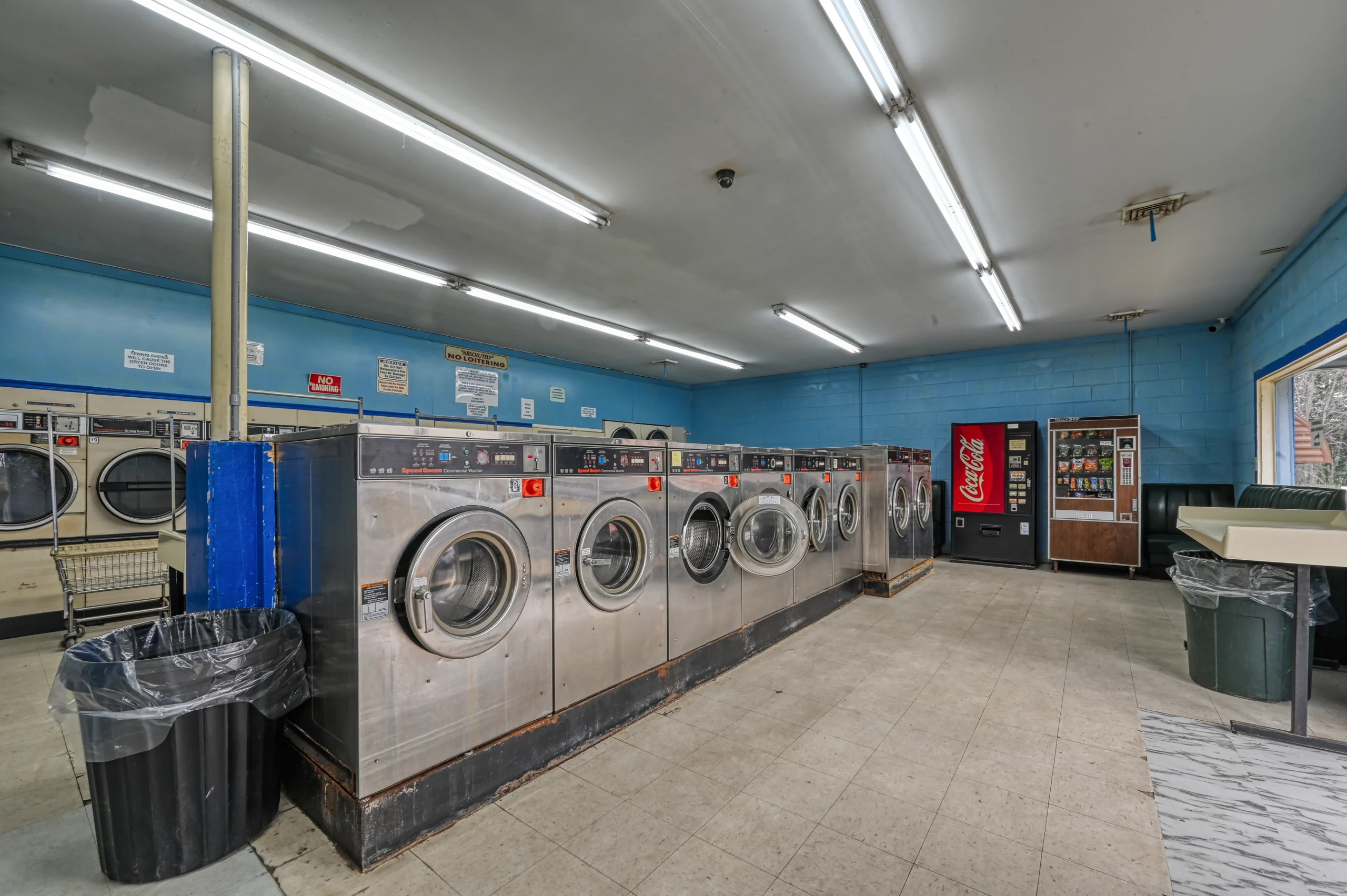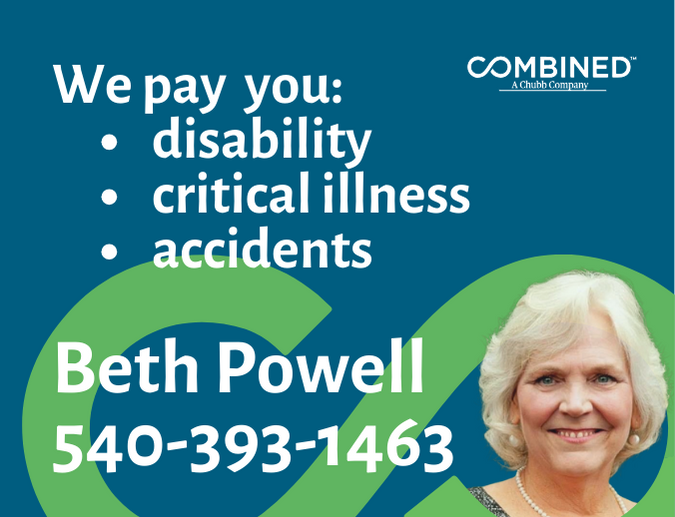
Brands are everywhere. From the world-renowned golden arches of McD’s to the font and color of your state license plate… humanity is made to recognize symbols that remind us of specific products, services, and experiences…
Some of the most famous (and the most valuable) include Apple, Amazon, and Microsoft. Some brands even go so far that the majority of the world even recognizes their slogans and taglines… like Nike’s “Just do it” or Disneyland’s “The happiest place on earth.”
But what do you think about, specifically, when seeing the Mcdonald’s golden arches? Chances are, it’s something greasy…
Most of us don’t realize that brands are not just marks burned into our minds to help us recognize products (or french fries), they are also signals that remind us of specific experiences that we’ve had… the salty satisfaction of something you remember tasting, smelling, and hearing crunch between your teeth…
Brands and the subconscious: how the Triune Brain affects our decisions
Mcdonald’s is just one example of a company that has successfully “branded” itself into the depths of the limbic brain, where we store emotions, memories, and attachments.
But did you know that the majority (like 95% or more) of our decisions are actually subconscious? That’s because the brain is made up of three parts: the reptilian brain (the oldest, most instinctual part), the limbic brain (where emotions and attachments are stored), and the neocortex (or “thinking brain,” where we make decisions based on logic and reasoning)…

The reptilian brain is responsible for our fight-or-flight response, while the limbic brain is in charge of our emotions and memories. The neocortex is where solve puzzles and use logic…
But what most people don’t realize is that the neocortex takes conscious effort and lots of energy to activate… so most of us go through our day, making decisions… without activating that part of our brains. So even though most companies think they can help their customers make logical decisions, it’s more important to help customers identify with a deeper set of values, emotions… and experiences.
Because instead of making logical choices, we allow our subconscious to guide us through our decisions, by using emotions and memories to help us decide what’s safe – and therefore most important.
Think about it…
How often are you likely to try a brand you’ve never used before? And what is the first thing you look for when you are thinking about trying a new brand…?
… social proof that someone else has tried it before you.
This is why early adopters only make u 13.5% of the population. This is why you find yourself “caving” to cravings, or making quick purchases on things you may not actually need...
Applying the triune brain to the buyers’ journey
The Buyers’ Journey is a framework created by marketers to help companies understand how people make decisions. There are three stages in the buyer’s journey: awareness, consideration, and decision.

Awareness is when someone first realizes they have a problem…
Consideration is when they start looking for solutions to that problem…
And finally, the Decision stage is when they choose a specific product or service to solve their problem.
What most companies don’t realize is that each stage of the buyer’s journey requires different kinds of marketing materials and tactics – taking into account the different needs of each stage… as well as the different parts of the brain that are activated at each stage.
Let’s take hunger as an example of how you might go through The Buyer’s Journey into making a purchase…
During the Awareness stage, the symptoms are grumpiness, hunger pains, low energy, etc. You may start to try and understand why you are feeling all of these symptoms. Your reptilian brain is going to dominate in this situation… and you are going to start looking for ways to survive. Your subconscious will ask… “why am I feeling pain in my stomach? Why am I having a hard time being around other people…?”
During the Consideration stage, you realize you haven’t eaten in a while… and you are going to start relying on emotional memories in the limbic brain to tell you what you need to do next. You are going to start to consider all of your options… something with protein… something with sugar… something sweet or salty… something heavy or light… drink, food, or both? You will start to visualize how these options are going to make you feel during and after consumption…
And finally, during the Decision stage, you may activate the neocortex, which is focused on logic and reasoning…. “how far is McDonalds? How much will it cost to eat at the steak house? Caffein or no caffeine?” And if you are looking at a new option you haven’t tried before… you will probably rely on social proof of what the experience is going to be like… “Should I try this new brand of microwavable lunch?”
As you visualize your options, you will see what you want the end to look like, the job you want, and need your choice to do for you.
Brand Alignment in the Buyers’ Journey
Brand… whathuh? Brand alignment. You know, when your personal values, morals, and preferences match up with the thing you’re looking to buy. Someone who believes that what they eat impacts their health, for example, probably won’t be tempted to stop at McDonald’s, but might have a hard time passing up Trader Joe’s.
What part of the brain do you think values live in…? If you guess limbic, you guessed right.
That’s because brands have values attached to them – and when a customer’s experience matches those values – we call that brand alignment. And brands can do that by offering a single coherent, continuous narrative… from their brand visuals and messages… the customer’s actual experience with the product or service.
People buy the things they want to believe
The next time a commercial makes you cry, try to understand what it was that you identified with most… what part of that experience dug deep into your limbic brain and pulled out a value? What was that value? Do you identify with that brand, and does it make you want to buy what they are selling?
Take this commercial by Marriot Bonvoy… called Travel makes us Whole…
What are the values and memories this commercial are helping you to feel? For some, it may be not seeing someone you love for a long time because of COVID travel restrictions, and for some, it may just be missing the free feeling that traveling gives you… whatever your unique story, this commercial has brand alignment with those values.“People don’t buy what you do; they buy why you do it. And what you do simply proves what you believe” – Simon Snek, Start with Why
Brand Alignment offers clear values and a consistent marketing narrative
So here we are, coming full circle back to brand alignment. So far we’ve learned…
- In order for marketing to be effective, it needs to take into account the different stages of the buyer’s journey… and that each stage is associated with a different part of the brain.
- We’ve also learned that customers make purchase decisions based on emotional memories stored in the limbic brain… and that these memories are triggered by brand visuals and messages.
- And finally, we’ve learned that when a customer’s experience with a product or service matches the values attached to the brand, we call that brand alignment.
So what does all this mean for your marketing strategy?
It means that if you want to be successful in creating a loyal, dedicated, and aligned customer base, you need to create a cohesive narrative across all channels – from your website to your social media posts to the imagery and messages that your customers hear, see, feel… before, during and after the sale.
How to have brand alignment

There are four key steps to having brand alignment.
First, you have to know what your values are. What does your company stand for? What do you want to be known for? What promise are you making your customers?
Second, create consistent messaging: across all channels, make sure your visuals and messaging reflect your values.
Third, design an amazing customer experience: from the first time they visit your website to when they receive their product in the mail, design an experience that is memorable and in line with your values.
And four, get feedback and keep improving: listen to what customers are saying about your brand and make changes accordingly.
10 questions to ask that prove brand alignment
How do you know if you have brand alignment with your values? Rate yourself on a scale of 1-5 for each of these questions, with 1 being NOT true and 5 being true
- I have a clear understanding of my ideal customer
- My core beliefs and values are communicated in my brand materials
- My audience understands what I do
- My brand communicates what makes me different and special from my competitors
- My message is compelling and speaks to the pain points of my audience
- My brand design and messaging is well developed
- My offer solves the pain points of my customer
- My ideal customer is described as the hero of my story
- My core message describes the transformation my customer will experience
- My brand communicates social proof and insight into company culture
If you scored yourself a perfect score of 50, congratulations! You have a strong brand alignment with your values. If not, don’t worry – there’s always room for improvement.
Remember, brand alignment is crucial for companies to be able to grow… because when your customers’ experiences match up with your values, they’ll be more likely to become loyal, dedicated fans of your brand. When there is a misalignment between what a company says its values are and what its actions show… it creates doubt, confusion, and mistrust.

Hi! I’m Jennifer Bailey and I partner with entrepreneurs who have massive ideas that could change the world. Most marketing is meaningless. Filled with empty promises, its only job is to bring in new traffic, new leads, and new customers. But I’ve drawn a line in the sand, and I’ve learned that marketing can do so much more than reach business goals and build profit. My methods give businesses the fire and soul they need to reach the right people, set the groundwork for sustainable relationships, and offer true value to the people on both the giving and receiving ends of marketing.
Subscribe for Updates
Sponsors
latest articles
“Mineral Deserves Better” Vice Mayor Chapman Calls for Accountability, Addresses Concerns Facing Mineral

Miller’s Market Gas Pumps Controversy Continues; Town of Mineral Delays Construction

33rd Annual Orange Uncorked Wine Festival: A Celebration of Virginia’s Finest Wines

From Lake Anna to the World’s Stage: Huntley’s Voice Echos into Triumph

Aliens are Real [Letter from the Editor]
![Featured image for “Aliens are Real [Letter from the Editor]”](https://lakeanna.online/wp-content/uploads/2024/04/LAMG-Social-Media-Template-Set-Landscape-4.png)
One Leash, Two Lives: Former Marine Finds New Mission to Save Lives through Service Dogs

Brands are everywhere. From the world-renowned golden arches of McD’s to the font and color of your state license plate… humanity is made to recognize symbols that remind us of specific products, services, and experiences…
Some of the most famous (and the most valuable) include Apple, Amazon, and Microsoft. Some brands even go so far that the majority of the world even recognizes their slogans and taglines… like Nike’s “Just do it” or Disneyland’s “The happiest place on earth.”
But what do you think about, specifically, when seeing the Mcdonald’s golden arches? Chances are, it’s something greasy…
Most of us don’t realize that brands are not just marks burned into our minds to help us recognize products (or french fries), they are also signals that remind us of specific experiences that we’ve had… the salty satisfaction of something you remember tasting, smelling, and hearing crunch between your teeth…
Brands and the subconscious: how the Triune Brain affects our decisions
Mcdonald’s is just one example of a company that has successfully “branded” itself into the depths of the limbic brain, where we store emotions, memories, and attachments.
But did you know that the majority (like 95% or more) of our decisions are actually subconscious? That’s because the brain is made up of three parts: the reptilian brain (the oldest, most instinctual part), the limbic brain (where emotions and attachments are stored), and the neocortex (or “thinking brain,” where we make decisions based on logic and reasoning)…

The reptilian brain is responsible for our fight-or-flight response, while the limbic brain is in charge of our emotions and memories. The neocortex is where solve puzzles and use logic…
But what most people don’t realize is that the neocortex takes conscious effort and lots of energy to activate… so most of us go through our day, making decisions… without activating that part of our brains. So even though most companies think they can help their customers make logical decisions, it’s more important to help customers identify with a deeper set of values, emotions… and experiences.
Because instead of making logical choices, we allow our subconscious to guide us through our decisions, by using emotions and memories to help us decide what’s safe – and therefore most important.
Think about it…
How often are you likely to try a brand you’ve never used before? And what is the first thing you look for when you are thinking about trying a new brand…?
… social proof that someone else has tried it before you.
This is why early adopters only make u 13.5% of the population. This is why you find yourself “caving” to cravings, or making quick purchases on things you may not actually need...
Applying the triune brain to the buyers’ journey
The Buyers’ Journey is a framework created by marketers to help companies understand how people make decisions. There are three stages in the buyer’s journey: awareness, consideration, and decision.

Awareness is when someone first realizes they have a problem…
Consideration is when they start looking for solutions to that problem…
And finally, the Decision stage is when they choose a specific product or service to solve their problem.
What most companies don’t realize is that each stage of the buyer’s journey requires different kinds of marketing materials and tactics – taking into account the different needs of each stage… as well as the different parts of the brain that are activated at each stage.
Let’s take hunger as an example of how you might go through The Buyer’s Journey into making a purchase…
During the Awareness stage, the symptoms are grumpiness, hunger pains, low energy, etc. You may start to try and understand why you are feeling all of these symptoms. Your reptilian brain is going to dominate in this situation… and you are going to start looking for ways to survive. Your subconscious will ask… “why am I feeling pain in my stomach? Why am I having a hard time being around other people…?”
During the Consideration stage, you realize you haven’t eaten in a while… and you are going to start relying on emotional memories in the limbic brain to tell you what you need to do next. You are going to start to consider all of your options… something with protein… something with sugar… something sweet or salty… something heavy or light… drink, food, or both? You will start to visualize how these options are going to make you feel during and after consumption…
And finally, during the Decision stage, you may activate the neocortex, which is focused on logic and reasoning…. “how far is McDonalds? How much will it cost to eat at the steak house? Caffein or no caffeine?” And if you are looking at a new option you haven’t tried before… you will probably rely on social proof of what the experience is going to be like… “Should I try this new brand of microwavable lunch?”
As you visualize your options, you will see what you want the end to look like, the job you want, and need your choice to do for you.
Brand Alignment in the Buyers’ Journey
Brand… whathuh? Brand alignment. You know, when your personal values, morals, and preferences match up with the thing you’re looking to buy. Someone who believes that what they eat impacts their health, for example, probably won’t be tempted to stop at McDonald’s, but might have a hard time passing up Trader Joe’s.
What part of the brain do you think values live in…? If you guess limbic, you guessed right.
That’s because brands have values attached to them – and when a customer’s experience matches those values – we call that brand alignment. And brands can do that by offering a single coherent, continuous narrative… from their brand visuals and messages… the customer’s actual experience with the product or service.
People buy the things they want to believe
The next time a commercial makes you cry, try to understand what it was that you identified with most… what part of that experience dug deep into your limbic brain and pulled out a value? What was that value? Do you identify with that brand, and does it make you want to buy what they are selling?
Take this commercial by Marriot Bonvoy… called Travel makes us Whole…
What are the values and memories this commercial are helping you to feel? For some, it may be not seeing someone you love for a long time because of COVID travel restrictions, and for some, it may just be missing the free feeling that traveling gives you… whatever your unique story, this commercial has brand alignment with those values.“People don’t buy what you do; they buy why you do it. And what you do simply proves what you believe” – Simon Snek, Start with Why
Brand Alignment offers clear values and a consistent marketing narrative
So here we are, coming full circle back to brand alignment. So far we’ve learned…
- In order for marketing to be effective, it needs to take into account the different stages of the buyer’s journey… and that each stage is associated with a different part of the brain.
- We’ve also learned that customers make purchase decisions based on emotional memories stored in the limbic brain… and that these memories are triggered by brand visuals and messages.
- And finally, we’ve learned that when a customer’s experience with a product or service matches the values attached to the brand, we call that brand alignment.
So what does all this mean for your marketing strategy?
It means that if you want to be successful in creating a loyal, dedicated, and aligned customer base, you need to create a cohesive narrative across all channels – from your website to your social media posts to the imagery and messages that your customers hear, see, feel… before, during and after the sale.
How to have brand alignment

There are four key steps to having brand alignment.
First, you have to know what your values are. What does your company stand for? What do you want to be known for? What promise are you making your customers?
Second, create consistent messaging: across all channels, make sure your visuals and messaging reflect your values.
Third, design an amazing customer experience: from the first time they visit your website to when they receive their product in the mail, design an experience that is memorable and in line with your values.
And four, get feedback and keep improving: listen to what customers are saying about your brand and make changes accordingly.
10 questions to ask that prove brand alignment
How do you know if you have brand alignment with your values? Rate yourself on a scale of 1-5 for each of these questions, with 1 being NOT true and 5 being true
- I have a clear understanding of my ideal customer
- My core beliefs and values are communicated in my brand materials
- My audience understands what I do
- My brand communicates what makes me different and special from my competitors
- My message is compelling and speaks to the pain points of my audience
- My brand design and messaging is well developed
- My offer solves the pain points of my customer
- My ideal customer is described as the hero of my story
- My core message describes the transformation my customer will experience
- My brand communicates social proof and insight into company culture
If you scored yourself a perfect score of 50, congratulations! You have a strong brand alignment with your values. If not, don’t worry – there’s always room for improvement.
Remember, brand alignment is crucial for companies to be able to grow… because when your customers’ experiences match up with your values, they’ll be more likely to become loyal, dedicated fans of your brand. When there is a misalignment between what a company says its values are and what its actions show… it creates doubt, confusion, and mistrust.

Hi! I’m Jennifer Bailey and I partner with entrepreneurs who have massive ideas that could change the world. Most marketing is meaningless. Filled with empty promises, its only job is to bring in new traffic, new leads, and new customers. But I’ve drawn a line in the sand, and I’ve learned that marketing can do so much more than reach business goals and build profit. My methods give businesses the fire and soul they need to reach the right people, set the groundwork for sustainable relationships, and offer true value to the people on both the giving and receiving ends of marketing.
Subscribe for Updates
Sponsors
latest articles
“Mineral Deserves Better” Vice Mayor Chapman Calls for Accountability, Addresses Concerns Facing Mineral

Miller’s Market Gas Pumps Controversy Continues; Town of Mineral Delays Construction

33rd Annual Orange Uncorked Wine Festival: A Celebration of Virginia’s Finest Wines

From Lake Anna to the World’s Stage: Huntley’s Voice Echos into Triumph

Aliens are Real [Letter from the Editor]
![Featured image for “Aliens are Real [Letter from the Editor]”](https://lakeanna.online/wp-content/uploads/2024/04/LAMG-Social-Media-Template-Set-Landscape-4.png)
One Leash, Two Lives: Former Marine Finds New Mission to Save Lives through Service Dogs


“Mineral Deserves Better” Vice Mayor Chapman Calls for Accountability, Addresses Concerns Facing Mineral
Article By Jen Bailey

Miller’s Market Gas Pumps Controversy Continues; Town of Mineral Delays Construction
Article By Debbie Moon









